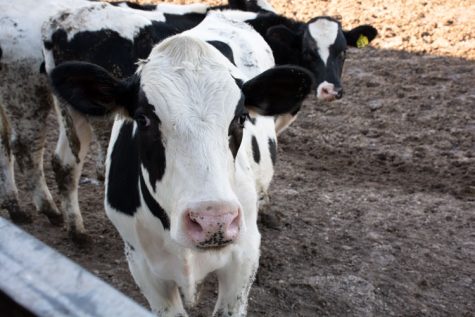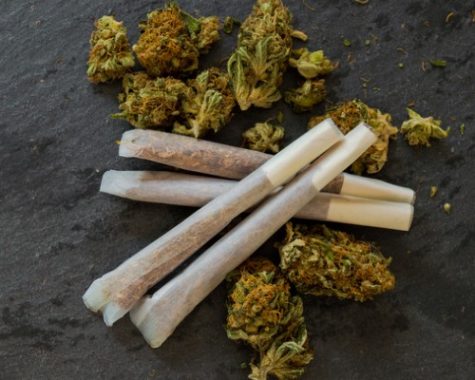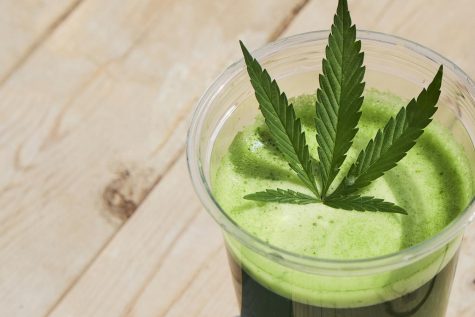Researchers say it’s healthier to vape dried bud, as opposed to extracted oils
The professor says that, while long-term research is currently unavailable, vaping is not entirely harmless

Contrary to popular belief, smoking dried cannabis flower could be healthier for consumers than vaping the plant’s potent oils. This is according to a professor at the Canadian University of Waterloo School of Public Health & Health Systems named David Hammond.
Hammond’s research focuses primarily on the prevention of chronic disease. He has collaborated alongside global governmental organizations and formerly worked for the World Health Organization (WHO) as an Advisor. In order to draw a conclusion on the health benefits of vaping dried bud instead of oils, he teamed up with a group of researchers.
Together, they delved deep into the health risks associated with using modern e-cigarette or vaping devices, be it for tobacco or cannabis consumers. The professor says that, while long-term research is currently unavailable, vaping is not entirely harmless. In fact, Hammond recommends swapping oils for dry herbs, but still favors vaping over smoking.
“The most accurate thing we can say is if people frequently vape, it’s almost certainly harmful but much less harmful than smoking cigarettes,” he said. “You might have a dozen or two dozen chemicals in vapes but you have like 7,000 in tobacco.”
He noted that it may take 10-20 years until a chronic disease transpires, making it difficult to fully determine the health risks of vaping. After all, vaping cannabis and/or nicotine is a fairly modern method of consumption.
Smoking cured cannabis may increase the bioavailability of cannabinoids

“Don’t vape,” urged Hammond, after the University of Waterloo professor scoured the medical records of vape users. “Especially the modern e-cigarettes like Juul. They are much more addictive than they used to be. And they are likely to be harmful if kids use them regularly.”
Even though he doesn’t recommend consumers vape weed in order to experience the health benefits of cannabis’ psychoactive cannabinoid THC (tetrahydrocannabinol), its non-psychoactive constituent CBD (cannabidiol) or perhaps both, he recommends vaping the dried flower instead of oils.
Nonetheless, one of the earliest studies comparing both methods of consumption demonstrated a reduction in respiratory symptoms among vapers. Vaping cannabis oil can increase the bioavailability of cannabis’ naturally-occurring chemical compounds, of which there are hundreds. Despite the fact that vaping is an effective delivery route for THC, smoking the plant in its dried and cured form is an even better way to get yield the maximum effects of THC.
Since smoke contains damaging chemicals and toxins, smokers run the risk of contracting a respiratory condition or experiencing lung irritation. On the other hand, the aerobic bacteria contained in properly dried and cured cannabis bursts into life when smoked, thus amplifying its therapeutic effects.
Research suggests that more kids are vaping
Innovations in vaporizer delivery systems are providing cannabis consumers with an opportunity to use the plant in more than just its flower form. Although beneficial for consumers who want discreet dosing, ease of use and versatility in terms of consuming their weed, the rise in popularity of vaping products is encouraging more youths to vape, according to statistics.
In the U.S., the legal age to vape is 18. High school students are big fans of e-cigarette and vaping devices. The Centers for Disease Control and Prevention (CDC) compared vaping statistics from 2017 with last year’s statistics and discovered that 1.5 million new youths started vaping in 2018. During that one-year period, the percentage of high school students who used e-cigarettes rose from 11.7 percent to 20.8 percent. For middle school students, the figure climbed from 3.3 percent to 4.9 percent.
The Government of Canada sets the legal age for vaping at 19 years old. Based on the results of the 2016-17 Canadian Student Tobacco, Alcohol and Drugs Survey, the number of Canadian students who admitted to trying vaping was three percent higher between 2016 and 2017 than it was between 2014 and 2015, when the figure rested at 20 percent.







